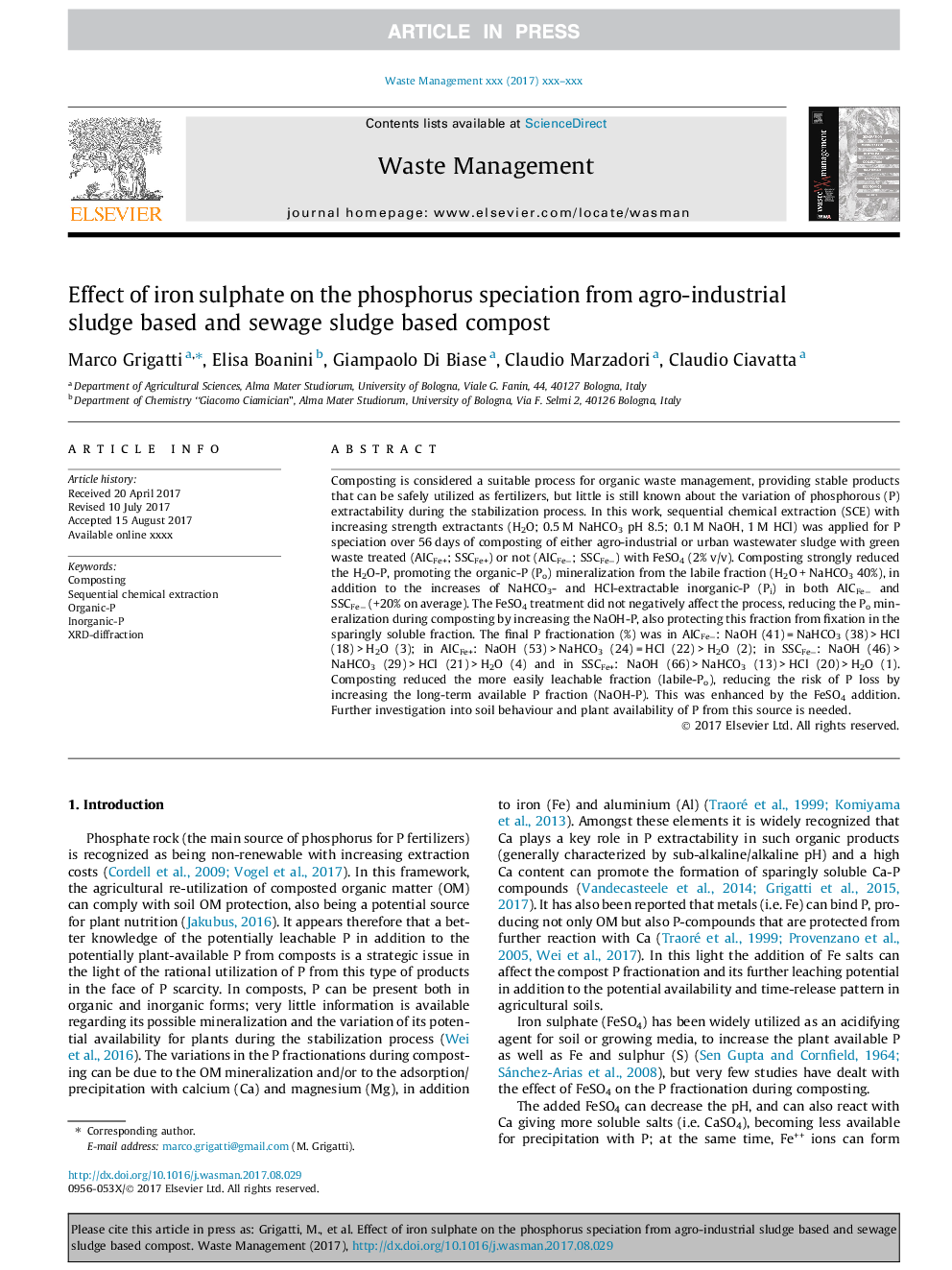| Article ID | Journal | Published Year | Pages | File Type |
|---|---|---|---|---|
| 8870439 | Waste Management | 2017 | 7 Pages |
Abstract
Composting is considered a suitable process for organic waste management, providing stable products that can be safely utilized as fertilizers, but little is still known about the variation of phosphorous (P) extractability during the stabilization process. In this work, sequential chemical extraction (SCE) with increasing strength extractants (H2O; 0.5Â M NaHCO3 pH 8.5; 0.1Â M NaOH, 1Â M HCl) was applied for P speciation over 56Â days of composting of either agro-industrial or urban wastewater sludge with green waste treated (AICFe+; SSCFe+) or not (AICFeâ; SSCFeâ) with FeSO4 (2%Â v/v). Composting strongly reduced the H2O-P, promoting the organic-P (Po) mineralization from the labile fraction (H2OÂ +Â NaHCO3 40%), in addition to the increases of NaHCO3- and HCl-extractable inorganic-P (Pi) in both AICFeâ and SSCFeâ (+20% on average). The FeSO4 treatment did not negatively affect the process, reducing the Po mineralization during composting by increasing the NaOH-P, also protecting this fraction from fixation in the sparingly soluble fraction. The final P fractionation (%) was in AICFeâ: NaOH (41)Â =Â NaHCO3 (38)Â >Â HCl (18)Â >Â H2O (3); in AICFe+: NaOH (53)Â >Â NaHCO3 (24)Â =Â HCl (22)Â >Â H2O (2); in SSCFeâ: NaOH (46)Â >Â NaHCO3 (29)Â >Â HCl (21)Â >Â H2O (4) and in SSCFe+: NaOH (66)Â >Â NaHCO3 (13)Â >Â HCl (20)Â >Â H2O (1). Composting reduced the more easily leachable fraction (labile-Po), reducing the risk of P loss by increasing the long-term available P fraction (NaOH-P). This was enhanced by the FeSO4 addition. Further investigation into soil behaviour and plant availability of P from this source is needed.
Related Topics
Physical Sciences and Engineering
Earth and Planetary Sciences
Geotechnical Engineering and Engineering Geology
Authors
Marco Grigatti, Elisa Boanini, Giampaolo Di Biase, Claudio Marzadori, Claudio Ciavatta,
